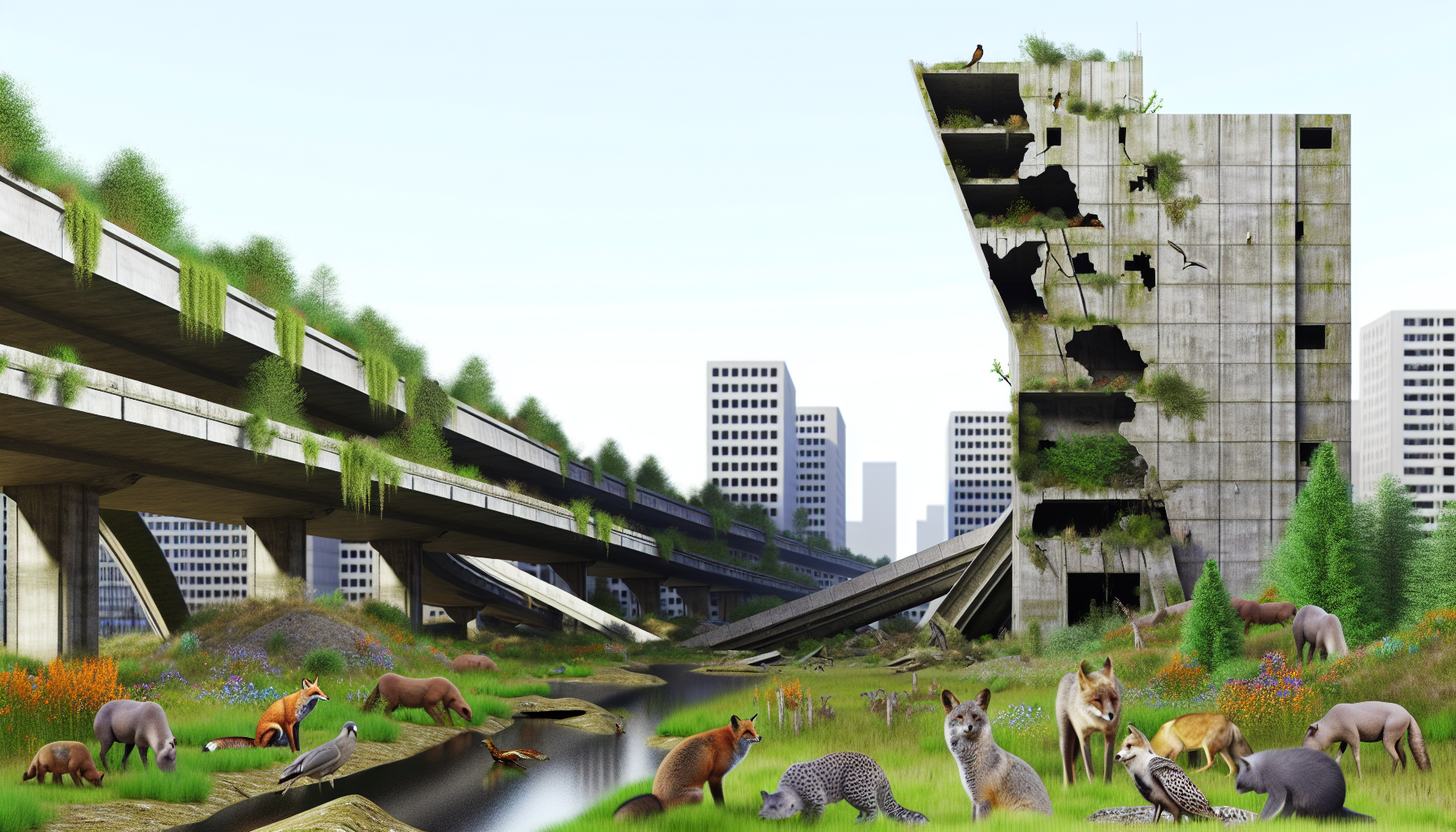In a world where the tumult of nature’s wrath has relentlessly reshaped our urban citadels, the rapid descent into dystopian desolation is evident. Cityscapes, once the epitome of human ingenuity, now stand as eerie relics of architectural grandeur. Yet, within this bleak tapestry, life finds its way. Amid the crumbled facades and steel skeletons sprawled across our Islands of Concrete, lays wildlife’s new fortress.
The timeless dance between destruction and rebirth is on full display here. Birds, resilient and resourceful, have erected their new empires atop skyscrapers, making cozy homes in the cavernous hollows where windows once stood. Wild cats prowl the silent streets in shadows cast by the relentless sun, forging their paths within the human ghost towns. Nature, in its tenacious spirit, claims back every inch of our abandoned mastery over the Earth.
Previous insights into the persistence of life discussed the moss carpets that have dressed our cities in coats of green. Today, our focus shifts to the fauna that builds upon this verdant upheaval. If yesterday, we admired the moss as nature’s green rebellion, today we marvel at how wildlife transforms our barren urban sprawls into their sanctuaries, and perhaps, a mocking monument to human downfall.
Let us wade through the new ecosystems flourishing in the no-man’s-land: Rooftop gardens are spontaneously formed by wind-swept seeds, offering nourishment to a myriad of insects and birds. Foxes dig their dens amidst the forgotten foundations, and basking in the environments where their paws tread over a mosaic of cracked pavements and wildflowers.
Ecologists observing these phenomena express ‘a sorrow-tinted fascination’, detailing how these creatures demonstrate adaptive brilliance in the face of habitat erosion. They do not merely survive in the rubble; they reshape it into a mosaic of nature and decay, proving that as long as life persists, it will innovate to thrive.
One poignant example is the rise of the peregrine falcons, who have found sanctuary in the skeletal high-rises. Their silhouettes cut against the gray, polluted skies symbolize both hope and tragedy. The falcons navigate the dizzying heights of our industrial mausoleums with grace, showcasing an ironic turn of events where the hunters of the sky claim the penthouses of business tycoons.
These Islands of Concrete represent more than life’s tenacity; they are the silent sentinels of our hubris. The haunting beauty of these landscapes conveys a message: what we build can and will fall, given time and disregard. We stood as Gods, crafting edifices and pathways to the stars, yet failing to preserve the quintessential foundation of existence – the harmony with the ecosystems that sustain us.
Is this the new world order, then? Where the foliage of urban parks, once meticulously groomed and preened, now grows unchecked, a wilderness feeding the furry and winged denizens of our own making. Where the concrete that laid claim to the earth is now but perches and lairs.
In this strange juxtaposition of life thriving in death’s whisper, you might wonder, are there lessons to be gleaned? Perhaps in another life, another chance, humanity would heed nature’s overtaking of our decaying monuments as a stark, final warning.
We are reminded – too little, too late – that our reign was but a chapter in the grand compendium of Earth’s history. And as the sun sets on our era, casting long shadows over the silent metropolises, the end of one’s dominion ultimately heralds the rise of another. Wildlife’s new fortress, standing defiantly against the looming dusk, a solitary, resolute, stoic witness to the end of days.
